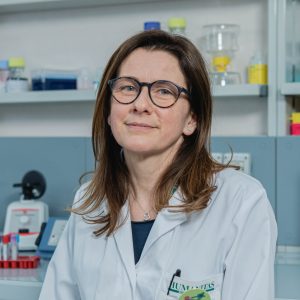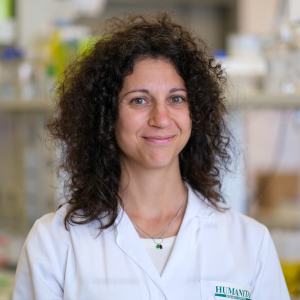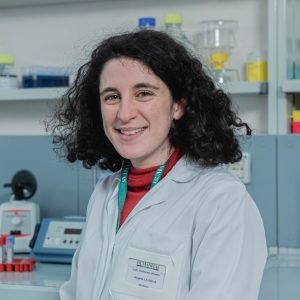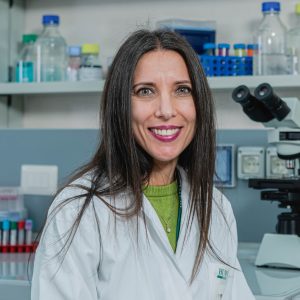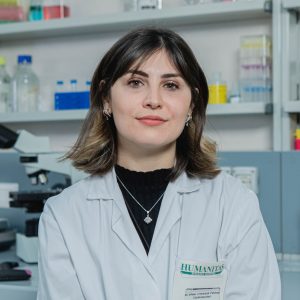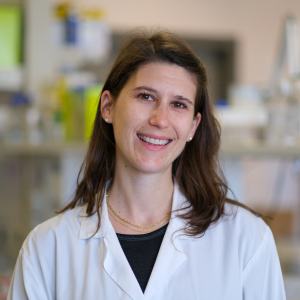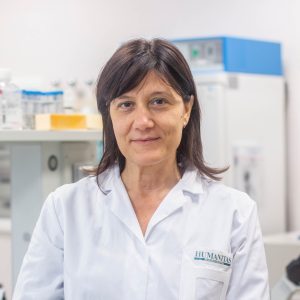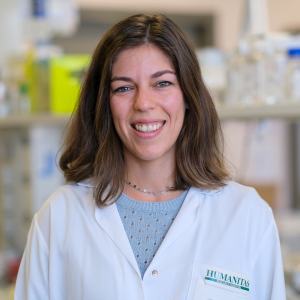Research Group
Di Pasquale Group
Cardiovascular Stem Cell Biology Lab
Our group aims at understanding the molecular basis of cardiovascular diseases, such as arrhythmias and primary cardiomyopathies, by using cardiac cells differentiated from human induced pluripotent stem cells and CRISPR/Cas9 gene-editing technology, with the final goal of boosting the development of newly effective therapies. A part of the team, led by Dr. Marianna Paulis, is also actively engaged in genomic therapy research, focusing on addressing chromosomal abnormalities through innovative approaches.
The challenge
Cardiovascular diseases represent a major cause of morbidity and mortality worldwide. Despite progresses in the field, preclinical studies on humans are limited, due to the difficult accessibility to human heart tissue, the challenges to isolate and grow human cardiac cells ex-vivo and their limited proliferative capacity; thus, knowledge accumulated so far is mainly based on animal-based models, which however carry some limitations due to species-specific differences in heart pathophysiology compared to humans. Fortunately, the discovery of induced pluripotent stem cells (iPSCs) in 2006, hasmarked the beginning of a new era for the cardiovascular biology studies, as for all field of biomedical research. These cells provide an autologous source of human cells and bear the same characteristics of embryonic stem cells (ESCs), i.e. the ability to proliferate indefinitely and to differentiate into all cell types of the human body. We already know how to differentiate iPSCs into functional cardiomyocytes (CMs) and other cardiovascular-relevant cells, but as in other medical specialties, to unleash the full applicative potential of iPSCs as platform for disease modeling, pharmacogenomics and drug screening, we need first to understand and better direct the differentiation and maturation process, thanks to new bioengineering technologies and the development of cell-based 3D structures and organoids.
Main research areas
iPSC-powered models of cardiac disease mechanisms
One of our main line of research is the development of human in vitro cardiac models, using cellular reprogramming and specific cardiac differentiation protocols, to serve as platforms for the identification of new disease mechanisms and for testing potential new therapeutic approaches and diagnostic/prognostic markers. Within the last ten years we have already generated patient-specific models together with CRISPR/Cas9 gene-edited isogenic pairs of several genetic cardiomyopathies and/or arrhythmias (e.g. DCM-dilated cardiomyopathy, CPVT-catecholaminergic polymorphic ventricular tachycardia) and deeply investigated their functional and molecular properties.
Development of new strategies toward maturation of iPSC-based models
This line of research is mainly devoted to the development of strategies and differentiation protocols to improve maturation of cells generated from iPSCs. Indeed, despite they can be virtually converted into any cell type, iPSC-CMs are often immature, showing morpho-functional, molecular and metabolic properties more similar to fetal than adult cardiomyocytes. This represents a major hurdle for the full applications of iPSC, especially in the context of late-onset disorders and for cardiac regeneration purposes. We are exploring different approaches, such as the implementation of self-assembly cellular protocols to form 3D cardiac microtissue and cardiac organoids, the use of organ-on-chip platforms, in collaboration with Politecnico di Milano and its spinoff BiomimiX, and the use of a new technology based on optical excitation of light-sensitive organic semiconductor polymers, in collaboration with a group of the Italian Institute of Technology and within the H2020-FETOPEN LIONHEARTED project.
Genomic Therapy for Chromosomal Disorders
A dedicated team, under the direct supervision of Dr. Marianna Paulis, focuses specifically on Pluripotent Stem Cell-based Genomic Therapy for chromosomal abnormalities. This work explores innovative techniques, particularly Chromosome Transplantation (CT), which aims to replace defective chromosomes in patient-specific iPSCs, providing a promising strategy for treating genetic disorders where conventional gene therapy has been proven insufficient, such as Duchenne Muscular Dystrophy (DMD). While still at the preclinical stage of development, CT holds great potential for offering lasting solutions to a range of chromosomal disorders. In parallel, we are actively developing organoids as advanced 3D cell models, crucial for studying disease mechanisms and serving as powerful tools for drug screening.
Selected publications
Optical Pacing of Human-Induced Pluripotent Stem Cell-Derived Cardiomyocytes Mediated by a Conjugated Polymer Interface.
Wnt signalling mediates miR-133a nuclear re-localization for the transcriptional control of Dnmt3b in cardiac cells.
The K219T-Lamin mutation induces conduction defects through epigenetic inhibition of SCN5A in human cardiac laminopathy.
Endoplasmic reticulum stress at the crossroads of progeria and atherosclerosis.
Induced Pluripotent Stem Cells to Study Mechanisms of Laminopathies: Focus on Epigenetics.
Cofilin-1 phosphorylation catalyzed by ERK1/2 alters cardiac actin dynamics in dilated cardiomyopathy caused by lamin A/C gene mutation.
Growth hormone-releasing hormone attenuates cardiac hypertrophy and improves heart function in pressure overload-induced heart failure.
T cell costimulation blockade blunts pressure overload-induced heart failure.
Adeno-associated virus-mediated CASQ2 delivery rescues phenotypic alterations in a patient-specific model of recessive catecholaminergic polymorphic ventricular tachycardia.
Peptidomimetic Targeting of Cavβ2 Overcomes Dysregulation of the L-Type Calcium Channel Density and Recovers Cardiac Function.
Electroactive polyurethane/siloxane derived from castor oil as a versatile cardiac patch, part II: HL-1 cytocompatibility and electrical characterizations.
Electroactive polyurethane/siloxane derived from castor oil as a versatile cardiac patch, part I: Synthesis, characterization, and myoblast proliferation and differentiation.
Generation of Cardiomyocytes from Pluripotent Stem Cells.
CaMKII inhibition rectifies arrhythmic phenotype in a patient-specific model of catecholaminergic polymorphic ventricular tachycardia.
Doubly heterozygous LMNA and TTN mutations revealed by exome sequencing in a severe form of dilated cardiomyopathy.
Post-natal cardiomyocytes can generate iPS cells with an enhanced capacity toward cardiomyogenic re-differentation.
Lentiviral vectors and cardiovascular diseases: a genetic tool for manipulating cardiomyocyte differentiation and function.
Bone morphogenetic protein 15 (BMP15) acts as a BMP and Wnt inhibitor during early embryogenesis.
Group members
